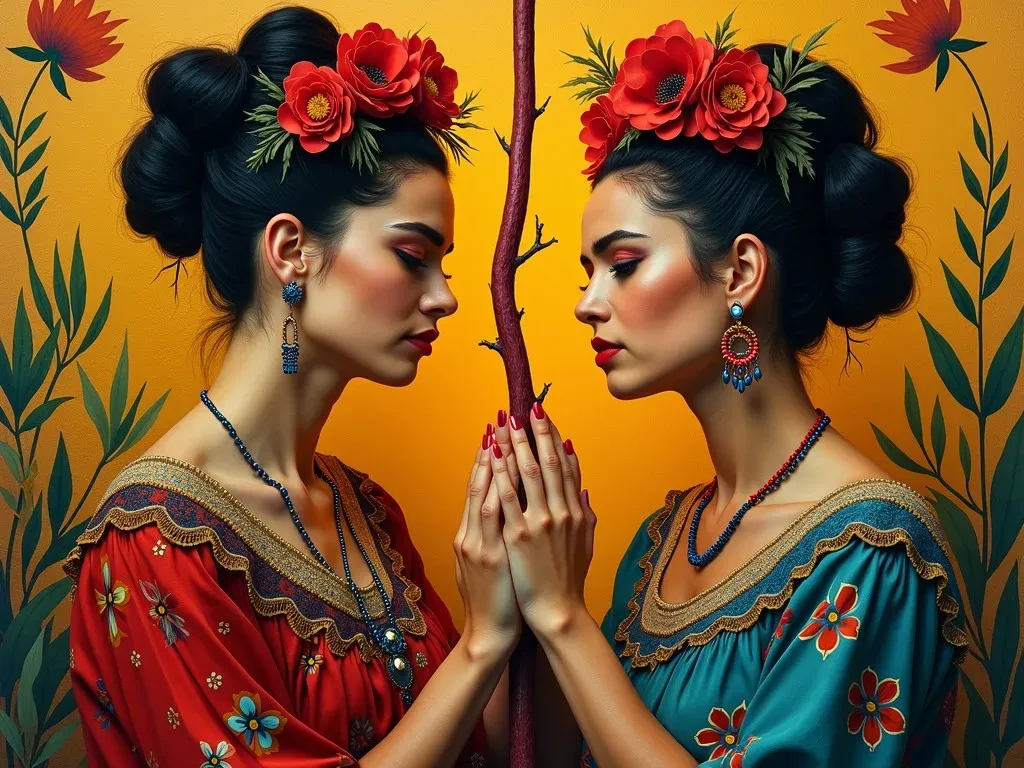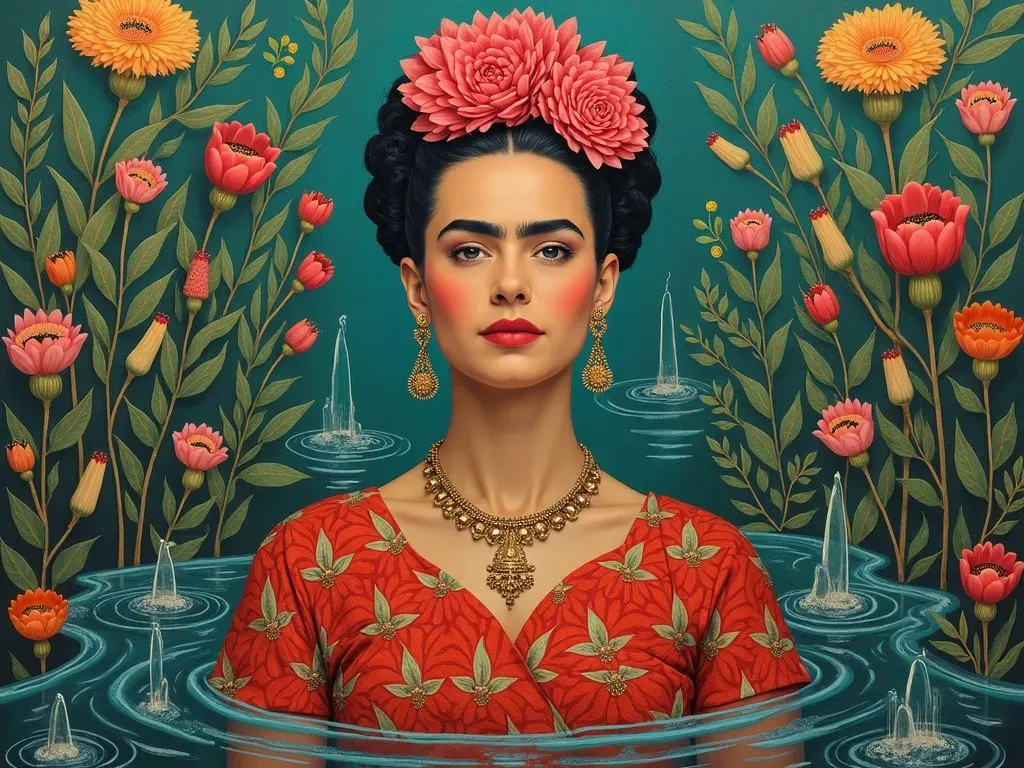Frida Kahlo, a name synonymous with passion and pain, continues to captivate audiences with her iconic artwork. Among her many contributions, her famous paintings encapsulate her tumultuous life experiences and offer profound insights into her identity. This article delves deep into the realm of Frida Kahlo’s most iconic paintings, exploring their meanings, symbolism, and the impact they have made in the world of art.
The Essence of Kahlo’s Paintings
Frida Kahlo’s oeuvre is deeply rooted in her personal struggles, politics, and experiences, particularly her tumultuous relationship with fellow artist Diego Rivera. Combining elements of surrealism, symbolism, and folk art, Kahlo’s paintings are an extension of her vibrant personality. Many of her works are self-portraits, reflecting her physical and emotional experiences.
| Aspect | Details |
|---|---|
| Birth | July 6, 1907 |
| Death | July 13, 1954 |
| Notable Artwork | The Two Fridas, Self-Portrait with Thorn Necklace and Hummingbird |
| Major Themes | Identity, Pain, Gender, Postcolonialism |
| Influences | Mexican culture, personal experiences, and pain |
Iconic Frida Kahlo Paintings and Their Symbolism
1. The Two Fridas (1939)
Arguably one of Kahlo’s most famous pieces, "The Two Fridas" encapsulates her duality and emotional pain, especially during her divorce from Diego Rivera. The painting features two versions of Frida sitting side by side; one wears a traditional Tehuana dress while the other is dressed in European attire. This contrast speaks to the internal struggle between her Mexican heritage and her Western influences.

2. Self-Portrait with Thorn Necklace and Hummingbird (1940)
In this poignant self-portrait, Frida Kahlo presents herself adorned with a thorn necklace and a dead hummingbird hanging from it. The thorns symbolize her pain, while the hummingbird represents hope. The background features a stark contrast, enhancing the emotional gravitas of the piece. This painting is a vivid reflection of Kahlo’s inner turmoil and resilience.

3. The Broken Column (1944)
"The Broken Column" is a harrowing representation of Frida’s physical pain following multiple surgeries. The painting depicts her spine as a broken column surrounded by nails, symbolizing her suffering and vulnerability. The tears flowing from her eyes emphasize the emotional weight of these experiences.

Facts and Figures About Kahlo’s Art
Here’s a closer look at some compelling statistics surrounding Frida Kahlo’s legacy and influence in art:
| Fact | Details |
|---|---|
| Total Known Paintings | Approximately 200 |
| Self-Portraits | 55% of her work |
| Major Exhibitions | Over 100 exhibitions worldwide |
| Popular Culture References | Numerous films, songs, and books |
| Museum | Frida Kahlo Museum, Mexico City |
Additional Iconic Works
4. What the Water Gave Me (1938)
This surreal work presents myriad elements emerging from water, embodying Frida’s subconscious thoughts and memories. It highlights her deep connection with nature and showcases her ability to express the inexpressible.

5. Viva la Vida, Watermelons (1954)
In her final painting, "Viva la Vida," Kahlo celebrates life even in the face of death. The vibrant watermelons symbolize prosperity and growth, serving as a powerful testament to her zest for life. This painting was completed shortly before her death and stands as a reflection of her indomitable spirit.

Thematic Overview of Kahlo’s Iconic Works
Kahlo’s paintings often reflect pain, identity, and a rich tapestry of cultural influences. Here are some key themes found throughout her artwork:
-
Identity and Self-Representation
- Kahlo’s exploration of self-identity is prevalent in her portraits. She often uses her likeness to navigate cultural, gender, and personal identities.
-
Pain and Suffering
- Many of her works directly reflect her physical pain and emotional struggles. This theme resonates deeply with viewers, evoking empathy and understanding.
-
Feminism and Gender Politics
- Kahlo’s bold self-portraits challenge the traditional ideals of femininity. She presents herself as a complex subject, breaking stereotypes and empowering women.
Frida Kahlo’s Influence Today
Frida Kahlo’s impact transcends the art world. She has become an icon of feminism, LGBTQ+ rights, and cultural pride. Today, her paintings inspire countless artists, and her life story continues to evoke fascination among scholars, feminists, and art enthusiasts alike.
Frequently Asked Questions (FAQs)
1. What was Frida Kahlo’s most famous painting?
Kahlo’s masterpiece "The Two Fridas" is often considered her most iconic work, vividly expressing her emotional state during a pivotal moment in her life.
2. How many paintings did Frida Kahlo create?
Kahlo is known to have created around 200 works throughout her lifetime, many of which are renowned self-portraits.
3. What themes are prevalent in Frida Kahlo’s works?
Key themes in Kahlo’s art include pain, identity, feminism, and personal experience, often reflecting her turbulent life journey.
4. Where can I view Frida Kahlo’s paintings?
Many of Kahlo’s works are displayed in the Frida Kahlo Museum in Mexico City, also known as Casa Azul. Additionally, her paintings can be found in art museums worldwide, including the Museum of Modern Art (MoMA) in New York.
For detailed explorations of her life and artwork, you can visit Frida Kahlo’s official museum page.
In summary, the story of Frida Kahlo is as multilayered as her art. Through her iconic paintings, she invites us into her world, a fascinating mixture of beauty, tragedy, and resilience.
